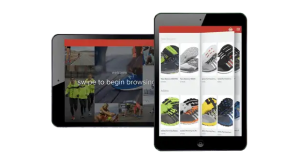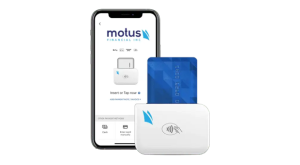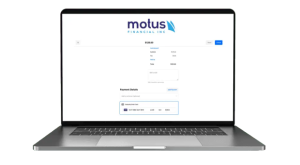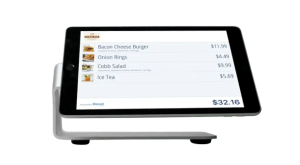10 Inventory Reduction Strategies You Learn from the Big Stores
That’s why you stay up at night worrying about every aspect of your business model, from inventory reduction strategies, which aim to keep your small business operating as leanly as possible, to small business tax deductions, should you decide to donate your excess inventory to charity.
From rent on your storefront, to carefully scheduling your workforce, to maximizing coverage while minimizing employee costs, there is a myriad of factors that go into reducing your costs and boosting your revenues. One of the biggest areas of concerns for a small business owner, however, is the proper management of their inventory. Typically speaking, your inventory represents your most important business asset, so getting a handle on inventory reduction strategies to maintaining healthy inventory levels, is critical to your bottom line.
To help you get started, we’ve put together 10 inventory reduction strategies designed to keep your business from being buried in unwanted merchandise.
1. Give Your Merchandise a Facelift
If you are having problems moving a particular product, the problem might not be with the product itself, but rather with how it is being marketed or displayed. If customers perceive that your merchandise is stale, they are far more likely to walk right on by as that excess merchandise continues to clog up valuable shelf and storage space. Consider revamping your floor to reposition your lagging inventory to a new vantage point. Simply repositioning or mixing up your shelf arrangement might be enough to excite customer interest in your slow moving stock.
In addition to repositioning lagging merchandise throughout your sales floor, consider replacing aging tags with brightly colored signage that makes the merchandise look new and fresh. Should the products also appear on your website, review the virtual display with an eye towards improvement. Take new pictures that show the merchandise in its best light for those perusing your online offerings.
2. Offer Steep Discounts for Inventory Reduction Strategies
One of the most proven inventory reduction strategies a retailer can implement is by offering discounts on merchandise suffering from lagging sales numbers. You obviously don’t want to give away your merchandise without turning a profit (if it can be avoided), so begin with an incremental approach such as 15, 20, or 25 percent. Only consider increasing the discount should your overstocked items continue to languish.
Rather than haphazardly slapping a “Clearance” sign on the display shelves of your slow-moving stock, which does little more than advertise that nobody else wants to buy it, consider promoting the cuts as part of a larger store-wide sale that is guaranteed to drive customers into your store. Done in this fashion, the discounts become more about the entire event and promotional pricing, rather than individual discounts on items no one seems to be buying.
Overstock sales and flash sales can be advertised with a sense of urgency to help drive customers through your doors sooner rather than later. Such events can serve to build customer loyalty, as casual shoppers can develop into regular customers after experiencing your superb customer service, great prices, and an exceptional mix of inventory.
3. Bundle for Savings and Faster Sales
Everyone from insurance to cable companies rewards customers for bundling services into one tidy package, so why not retail? It’s an approach you can use when trying to rid yourself of excess inventory. Next to discounting, bundling is the preferred method of moving low-performing inventory out your front door.
If it works for your business, you’ll want to find bundling opportunities whenever possible. For instance, grouping your poor performing merchandise with more popular items, at a slightly discounted price, is both a win for your profit margin and in the fight to reduce excess inventory.
Luckily, creative bundling need not be an exercise in rocket science. For instance, simply bundling multiple units of the exact same item is a surefire way to move excess inventory. For example, say an item typically retails at the $30 level, you can offer a bundle of three for only $75. This results in a lower hit on your profit margin while instilling a sense of value to your customer. Additionally, bundling faster moving items with lower performing products provides an incentive for customers to buy your overstocked items while adding real value to their shopping experience.
4. Assess Demand and Managing Demand Variability
Keeping your finger on the pulse of your customer’s demand for your wares and goods is all part of the process when attempting to establish inventory levels for your business. Where many small businesses run afoul in this process is in reconciling what is expected of their customer’s behavior and the reality of their actions. This concept is referred to as demand variability.
Factors that have an influence on this behavior include everything ranging from the complexity of consumer demand for your merchandise, to bottlenecks in the supply chain, to accurately identifying emerging trends in consumer tastes.
As a small business owner, you can take several steps to help get a handle of some of these variables. Regarding accurate forecasting, primarily a statistical exercise, you need accurate data to ensure you are modeling correctly and basing your inventory on observed customer behavior. The goal is to anticipate problems outside of your control, so you can take steps to limit your exposure to excess inventory. For example, adding smaller suppliers to your supply chain lets you tailor your orders to meet your customer’s demands better. So instead of being forced to order large quantities that you aren’t sure you will be able to sell, you can place smaller, more manageable orders. Just be aware, that the smaller your order size, the more likely you are to pay a higher price per unit.
5. Incentive Your Customer Base — Give Items Away for Free
Everyone likes to get free things, and if you are finding it impossible to sell a particular item fast enough to make room on your shelves for more popular products, why not consider giving away the item as an incentive to buy other items in your store? For example, you might offer a free “X” if the customer spends more than $100 in a single visit. Though this obviously should be a last-ditch effort to move the product, if it comes to this, don’t feel disheartened. The perceived value to the customer helps to offset any loss of revenue on the item. This is especially true if the item was never destined to sell.
There are a variety of ways you can give products away for free while still providing value to your business. From a reward for signing up to your company’s email subscription list, to offering a bonus for buying online, there is a multitude of offerings that you can leverage to clear your crowded shelves of that unwanted merchandise. Inventory reduction strategies allow you not only to remove slower performing goods from your inventory, but can also foster customer loyalty while offering an incentive for them to spend more money than they would have otherwise planned.
6. Return Unwanted Items to Your Suppliers
Just as you are often willing to bend over backward for your customer, so too will your supplier to keep your business. Unpopular products happen. Whether the merchandise’s appeal missed your target audience, or you simply bought more than you needed, reach out to your supplier to see if they will entertain a return or swap of the merchandise. As mentioned, your supplier wants to keep you as a customer, so leveraging that fact is an excellent way to reduce unwanted merchandise. The key factor here is making sure that the items remain undamaged and in their original packaging for an easier return.
7. Donate Items for a Tax Deductions
There is more than one way to add to your bottom line, and when an item doesn’t sell, consider donating those items to charity as a way to capitalize on any small business deductions that might be available. Under the Internal Revenue Service guidelines, regular C corporations may deduct the cost of the donated inventory, along with half the difference between an item’s cost and its fair market value. Therefore, if you pay $3 for an item and sell it for $6 to your customers, you would be able to record small business tax deductions on your federal tax returns. Always speak to your tax professional to ensure that you are following IRS rules and regulations whenever claiming a charitable donation. Far beyond a mere itemized line on your annual taxes, charitable giving can also provide your business with a wellspring of good public relations, while emptying your shelves of any slow moving merchandise.
8. Sell with Online Discount Marketplace
With online platforms like eBay and Amazon, you are likely to find great leads, outside your brick-and-mortar business, to move your excess inventory. This route entails a bit of groundwork in that you will need to set up an account and product pages. But, if the merchandise isn’t moving, the effort will be well worth it. Just remember that each site has its own rules and guidelines, so always study the terms and conditions of the site before listing your products.
9. Retrain Your Staff
It is human nature to promote those things you personally like while passing over items that fail to spark your interest. There is nothing wrong with having a personal preference. But, at the staff level, this bias can influence a product’s ability to move off your shelf, so it’s imperative that you are proactive with your efforts to get your employees onboard with your marketing push. Beyond stressing the need to push the under-performing inventory to customers in new and innovative ways, you might also consider offering a bonus to the highest performing sales associate. A little healthy competition can encourage staff to come up with new and creative ways to market your goods. And when they’re rewarded with an added bonus in their next paycheck, they’re guaranteed to keep up the good work.
10. Use Technology as Your Guide
The quickest way to get rid of under-performing inventory stocks is having a firm understanding of what products are clogging up your store. Cloud-based POS systems allow you to accurately keep track of inventory and sales, while spotting sagging sales numbers before they become a problem. From your supply chain to your sales pipeline, inventory tracking tools let you know the status of your entire inventory, so you’ll never have to worry that items accumulating dust in your store will be a long-term drain on your resources.
Ordering mistakes happen, trends end, and resulting inventory overstock can quickly begin costing your small business in big and small ways. From the inability to store new items to lost profits on under-performing merchandise, your best bet for retail success is adopting inventory reduction strategies that work, which will, in turn, will free up valuable storage space and working capital.
This article originally appeared on shopkeep.com MAR 13, 2017 | YAMARIE GRULLON. To see the article in its original format please visit here.








 Our POS systems are designed to streamline in-store transactions. With features like inventory management, sales reporting, and customer tracking, our POS solutions help you run your business more efficiently. Our terminals are compatible with various payment methods, including chip cards, contactless payments, and mobile wallets.
Our POS systems are designed to streamline in-store transactions. With features like inventory management, sales reporting, and customer tracking, our POS solutions help you run your business more efficiently. Our terminals are compatible with various payment methods, including chip cards, contactless payments, and mobile wallets.
